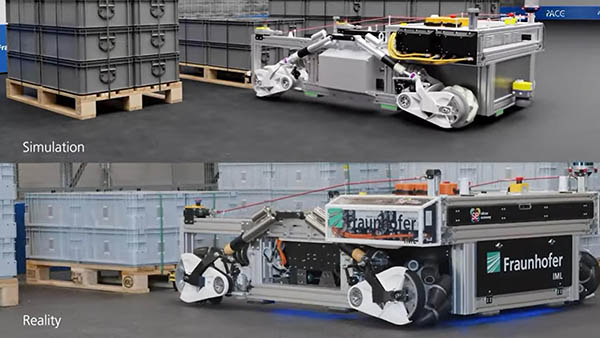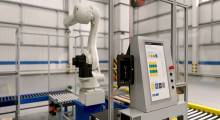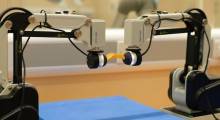Simulation is growing from a tool for prototyping to one for deploying robots in a variety of environments. Researchers at the Fraunhofer Institute for Material Flow and Logistics, or Fraunhofer IML, are using NVIDIA Omniverse for applied research in logistics for fulfillment and manufacturing. They are also using NVIDIA Isaac Sim for simulation in robot design.
Fraunhofer IML's goal is to ease the transition from automated guided vehicles (AGVs) to faster-moving autonomous mobile robots (AMRs). This advancement in automation promises to significantly accelerate logistics, said the Dortmund, Germany-based institute.
“We’re heading the research aspects for AMRs, and we’re looking at how we can go as fast and as safely as possible in logistics scenarios,” said Julian Eẞer, a robotics and artificial intelligence researcher at Fraunhofer IML.
Joseph Fraunhofer was a 19th-century pioneer in optics for telescopes who brought together scientific research with industrial applications. Today, Germany’s Fraunhofer Society claims to be Europe's largest research and development organization and conducts applied research in technologies ranging from AI and cybersecurity to medicine.
Launched in 1981, the Fraunhofer IML unit is one of 76 research institutes. Like other organizations — including BMW, Amazon, and Siemens — Fraunhofer IML relies on NVIDIA Omniverse for advanced applied research, said NVIDIA Corp.
Fraunhofer IML moves from MP3s to AMRs
The Fraunhofer Society has more than 30,000 employees and is involved in hundreds of research projects. In the 1990s, for instance, Fraunhofer was responsible for the development of the MP3 file format, which it said led to the digital music revolution.
Seeking to send AGVs along the same path as the compact disc, Fraunhofer in 2013 launched the Smart Transport Robot (STR). BMW and others now widely use it in their assembly plants, said the institute.
Fraunhofer IML said its work in AI helps the STR and updates to robots such as the O3Dyn indoor/outdoor system. The institute said it is working to advance the state of the art for AMRs in intralogistics and production.
The O3Dyn relies on the NVIDIA Jetson edge AI and robotics platform for a multitude of camera and sensor inputs to help navigate. The robot is capable of going up to 30 mph (48.2 kph). AI assists its wheels, which can move in any direction to maneuver in tight situations.
“The omnidirectional dynamics is very unique, and there’s nothing like this that we know of in the market,” said Sören Kerner, head of AI and autonomous systems at Fraunhofer IML.

Isaac Sim helps bridge 'sim-to-real' gap
Fraunhofer IML’s latest research strives to develop and validate these AMRs in simulation by closing the simulation-to-reality, or “sim-to-real” gap, said Santa Clara, Calif.-based NVIDIA. This is the difference between how the robot behaves in the virtual world versus the real world.
The scientists rely on Isaac Sim for virtual development of the highly dynamic AMR by exercising it in photorealistic, physically accurate 3D worlds. This enables Fraunhofer to import into the virtual environment its robot’s more than 5,400 parts from computer-aided design (CAD) software.
The institute can then rig them with physically accurate specifications with Omniverse PhysX. The result is that the virtual robot version can move as swiftly in simulation as the physical robot in the real world, NVIDIA said.
Fraunhofer IML said the virtual environment allows it to accelerate development, safely increase accuracy for real-world deployment, and scale up faster. “Minimizing the sim-to-real gap makes simulation become a digital reality for robots,” added NVIDIA.
Fraunhofer refers to the concept as “simulation-based AI.” To make faster gains, Fraunhofer is releasing its AMR simulation model into open source so developers can make improvements.
“This is important for the future of logistics,” said Kerner. “We want to have as many people as possible work on the localization, navigation, and AI of these kinds of dynamic robots in simulation.”
Fraunhofer presented a session on “Towards a Digital Reality in Logistics Automation: Optimization of Sim-to-Real” at NVIDIA's GTC (GPU Technology Conference) this past spring. The next GTC will be from Sept. 19 to 22, and attendees can register now for the robotics sessions.
Article topics
Email Sign Up
















